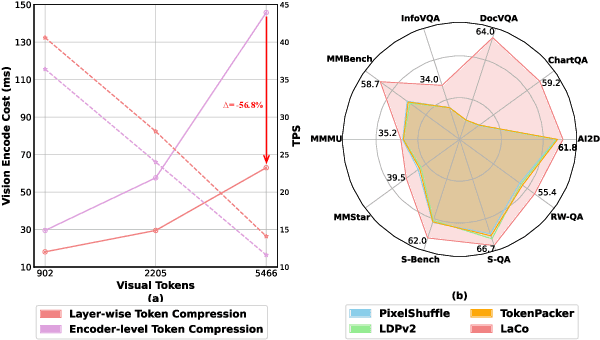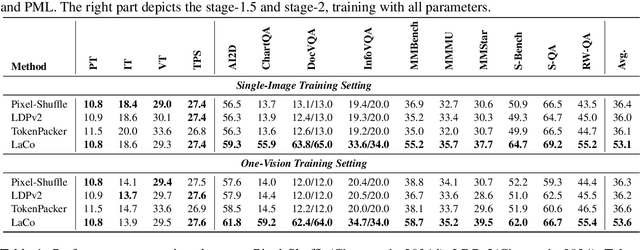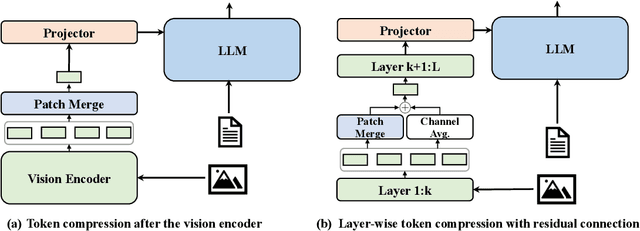Juntao Liu
LaCo: Efficient Layer-wise Compression of Visual Tokens for Multimodal Large Language Models
Jul 03, 2025



Abstract:Existing visual token compression methods for Multimodal Large Language Models (MLLMs) predominantly operate as post-encoder modules, limiting their potential for efficiency gains. To address this limitation, we propose LaCo (Layer-wise Visual Token Compression), a novel framework that enables effective token compression within the intermediate layers of the vision encoder. LaCo introduces two core components: 1) a layer-wise pixel-shuffle mechanism that systematically merges adjacent tokens through space-to-channel transformations, and 2) a residual learning architecture with non-parametric shortcuts that preserves critical visual information during compression. Extensive experiments indicate that our LaCo outperforms all existing methods when compressing tokens in the intermediate layers of the vision encoder, demonstrating superior effectiveness. In addition, compared to external compression, our method improves training efficiency beyond 20% and inference throughput over 15% while maintaining strong performance.
WeLayout: WeChat Layout Analysis System for the ICDAR 2023 Competition on Robust Layout Segmentation in Corporate Documents
May 11, 2023



Abstract:In this paper, we introduce WeLayout, a novel system for segmenting the layout of corporate documents, which stands for WeChat Layout Analysis System. Our approach utilizes a sophisticated ensemble of DINO and YOLO models, specifically developed for the ICDAR 2023 Competition on Robust Layout Segmentation. Our method significantly surpasses the baseline, securing a top position on the leaderboard with a mAP of 70.0. To achieve this performance, we concentrated on enhancing various aspects of the task, such as dataset augmentation, model architecture, bounding box refinement, and model ensemble techniques. Additionally, we trained the data separately for each document category to ensure a higher mean submission score. We also developed an algorithm for cell matching to further improve our performance. To identify the optimal weights and IoU thresholds for our model ensemble, we employed a Bayesian optimization algorithm called the Tree-Structured Parzen Estimator. Our approach effectively demonstrates the benefits of combining query-based and anchor-free models for achieving robust layout segmentation in corporate documents.
 Add to Chrome
Add to Chrome Add to Firefox
Add to Firefox Add to Edge
Add to Edge